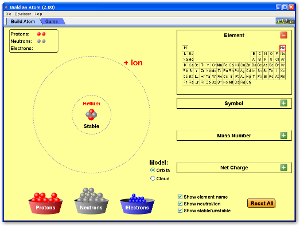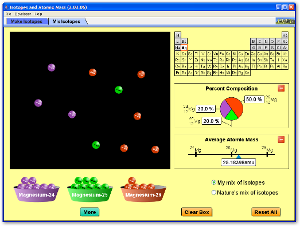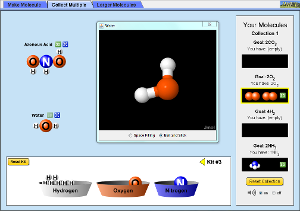Unit 29 - The Atom and Bonding
Learning Outcomes:
- Examine a variety of substances and classify these as elements or compounds (using the Periodic Table as a reference), metals or non-metals (OC4)
- Describe the structure of the atom, state the location, relative charge, and atomic mass of the sub-atomic particles, and define atomic number and isotope (OC39)
- Draw the Bohr structure of the first 20 elements (OC40)
- Understand how atoms of elements combine to form compounds (OC41)
- Recall that ionic bonding is an attraction between positive and negative ions; describe the bonding in NaCl and MgO as examples (OC42)
- State what a molecule is, understand that covalent bonds involve the sharing of pairs of electrons, and describe the bonding in H2, O2, H2O, CH4 as examples of covalent bonding (OC43)
- Investigate the ability of ionic and covalent substances to conduct electricity (OC44)
| |||||||
Build an AtomBuild atoms and check your knowledge with an interactive game
Atomic StructureAn alternative teaching approach
Ionic and Covalent Compoundsmaking sodium chloride and water from the elements
Ionic vs Molecular CompoundsAn explanation of how to spot what type of bonding occurs and more..
Melting, Dissolving & ConductingA demonstration of the differences between ionic and covalent compounds
IsotopesUse this simulation to improve your understanding of isotopes
|
Build a MoleculeAdd atoms together to make molecules
Atoms and MoleculesAn explanation of the difference between atoms and molecules
Atomic StructureBitesize revision lecture on atomic structure
Ionic + Covalent Compounds + waterHow do Ionic and Covalent compounds dissolve?
Bonding Explained AgainClever clogs.... errrr no.... clever dogs!!
The AtomIf they can understand the atom then so can you
|



